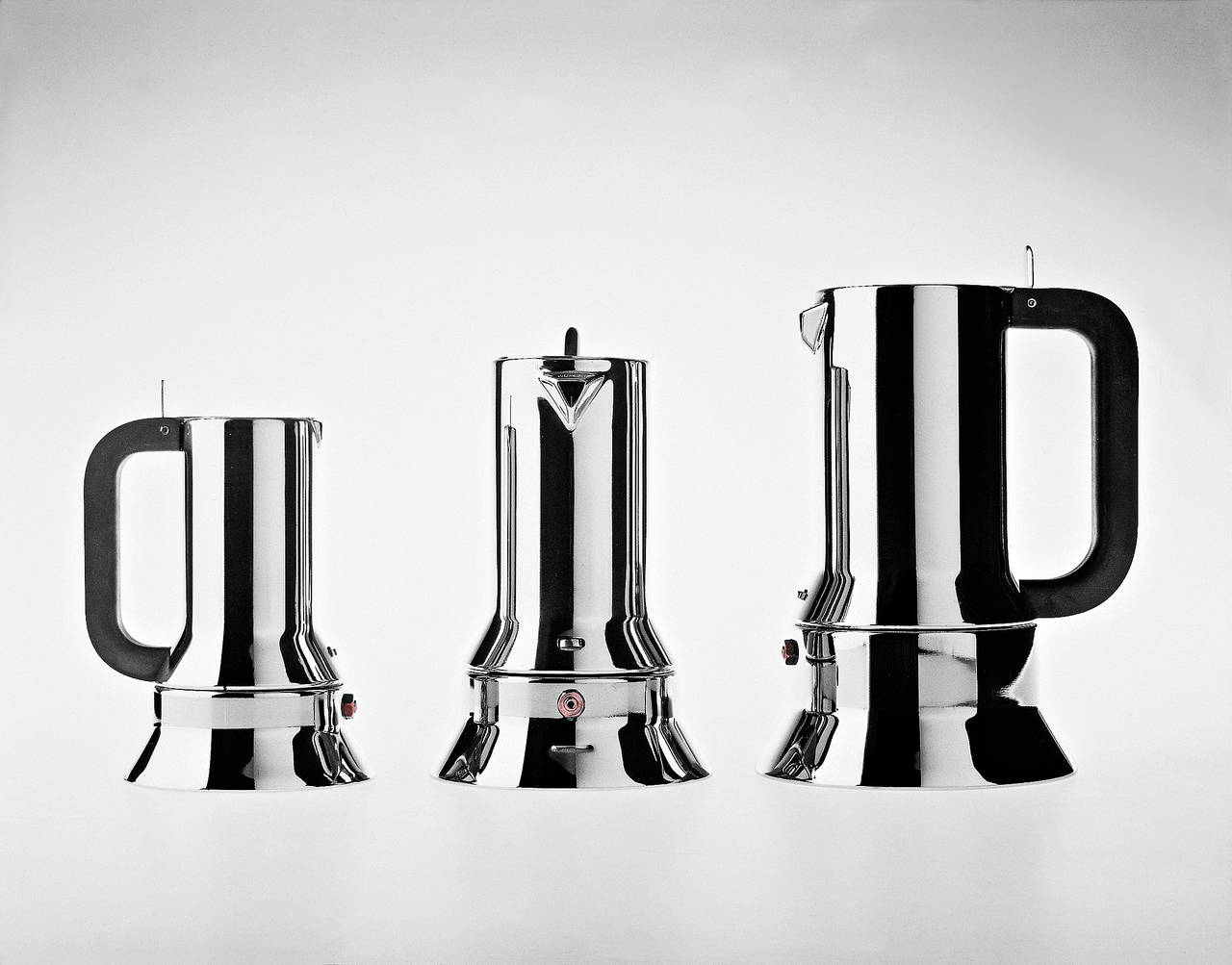the interpretation of Alessi company
a dialogue with Alberto Alessi, owner of Alessi firm
Alessi founded in 1921 are still considered as being handicraft items made with the aid of machines: even though we rely on contemporary, industrial technology and processing equipment, at depth our practice is still rooted in a handicraft culture. Research Lab in the Applied Arts, the role of which is to mediate continually between the most advanced and stimulating expressions of international creative culture on the one hand, and the public’s requirements and dreams on the other.

area: Ever since 1921, in the beginning with the company called FAO (Fratelli Alessi Omegna), Alessi has been a familiar presence on the Italian table. Apart from being an icon, the first coffee pot designed by Sapper for Alessi marked an important moment for the company, as it was the first product intended for the kitchen. How did this transition come about?
Alberto Alessi: Simple: on the one hand I did not consider Alessi could continue to only produce highly decorative tableware (trays, baskets, tea and coffee services...) which had represented the company’s production sector for more than half a century. On the other hand, I was fascinated by the adventure of my other grandfather, the genial craftsman, inventor and designer Alfonso Bialetti who had created the mocha express in 1933...
area: The catalogue of Alessi can be considered a kind of encyclopaedia of design. How has “food design” changed over the years?
A.A.: Yes, I like to think of my work as that of a builder of a kind of new encyclopaedia or dictionary, or dictionary containing objects and forms instead of words. But I don’t believe that our activity has a lot to do with food design: in the final analysis we work with objects, not with food, and then it seems to be a trendy expression which, among other things, one of our designers, Martì Guixè (who invented it) has disowned long ago.
area: You also triggered a true revolution in 1970, the year when you joined the company and introduced fun design Alessi. How important is it to excite, amaze and amuse the consumer, especially in the kitchen?
A.A.: In the Eighties Alessi was one of the companies promoting the socio-cultural changes which saw the kitchen change from a place that tended to be closed, inaccessible to outsiders, almost exclusively dedicated to functional operations, into a playful stage for socializing, for receiving friends, in short, to a means of conveying a domestic image. This was, above all, the merit of our authors, whose antennas captured the social evolutions.
area: Some of your products can be considered true icons, which appear in advertisements, on book covers, etc. I am thinking of Starck’s citrus squeezer. Who are the designers who have set an example on the subject of food, who deserve mention and have made history in this context?
A.A.: Well, I have worked with many masters who have profoundly influenced the approach of Alessi, i would say, from the beginning, above all Sottsass, Sapper, Castiglioni, Mendini, Rossi, Graves, Starck, Mari...
area: How has the advent of high-tech influenced your production? And, as to household appliances, how much of your research is divided between technological and functional studies, and research aimed at aesthetics and quality?
A.A.: Household appliances are no exception: it may sound strange, but in our research the functional aspects are always central! However, they are not everything, that would be too simple for the human species. The misunderstanding of those who believe we only focus on the form is caused by a scarce knowledge of the true practice of industrial design, by a too narrow conception of the word Function (have you read the text on thingness – or whatness – by Heidegger?) and borderline practice, an essential characteristic of the factories
of Italian design.
area: From metal manufacturing to kitchen design, a trajectory which has been crowned with the kitchen designed by Alessi and made by the Valcucine company. What is the idea characterizing this kitchen?
A.A.: I have chosen Mendini because:
1. He doesn’t know how to boil an egg
2. He was the right author, as he has accompanied us for many years in many design adventures, to design the backdrop for our small objects,
3. He seemed the right choice to get out of the pseudo-functional schemes that predominate, and to create
a truly poetic kitchen.









